20. Sully “Bones and All” (2022)
 Sully tried to go to therapy once. A relative made him go. He spent the entire session mumbling and babbling to himself before calling his psychiatrist the c-word for trying to prescribe him Abilify. He hasn’t been back since.
Sully tried to go to therapy once. A relative made him go. He spent the entire session mumbling and babbling to himself before calling his psychiatrist the c-word for trying to prescribe him Abilify. He hasn’t been back since.
19. The Ghost Pirates “The Fog” (1980)
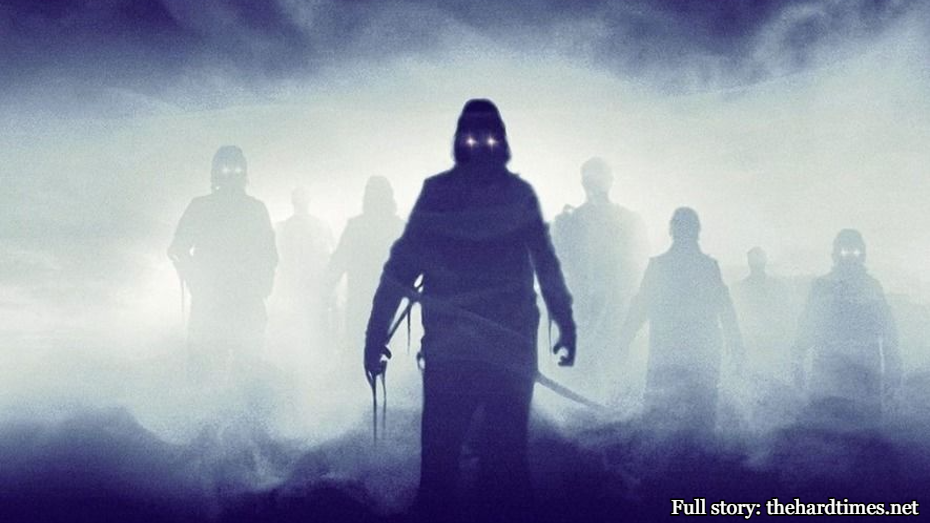 Captain Blake and his crew could really benefit from some group therapy to work out their collective anger issues. Really, you can hardly blame them for being angry. They were wealthy lepers who had their ship sunk by greedy townspeople looking to steal their gold. Of course they’re mad. Blake promises he’ll make his crew go. But coordinating that many schedules is difficult, especially when they can only do appointments when it’s foggy out.
Captain Blake and his crew could really benefit from some group therapy to work out their collective anger issues. Really, you can hardly blame them for being angry. They were wealthy lepers who had their ship sunk by greedy townspeople looking to steal their gold. Of course they’re mad. Blake promises he’ll make his crew go. But coordinating that many schedules is difficult, especially when they can only do appointments when it’s foggy out.
18. Dr. Seth Brundle “The Fly” (1985)
 Forget about gaslight-gatekeep-girlboss. Let us now discuss the ultimate example of manipulate-mansplain-malewife. Seth Brundle is the kind of “stupid genius” that you read about all the time now. The kind who drives a Tesla as a political statement. The kind who really wants to terraform another planet. The kind who thinks that buying Twitter as a post-divorce move was “based” and really cool. Seth would go to therapy, but mainly so that he could better use therapy speak to manipulate his partner.
Forget about gaslight-gatekeep-girlboss. Let us now discuss the ultimate example of manipulate-mansplain-malewife. Seth Brundle is the kind of “stupid genius” that you read about all the time now. The kind who drives a Tesla as a political statement. The kind who really wants to terraform another planet. The kind who thinks that buying Twitter as a post-divorce move was “based” and really cool. Seth would go to therapy, but mainly so that he could better use therapy speak to manipulate his partner.
17. Count Dracula “Dracula” (1931)
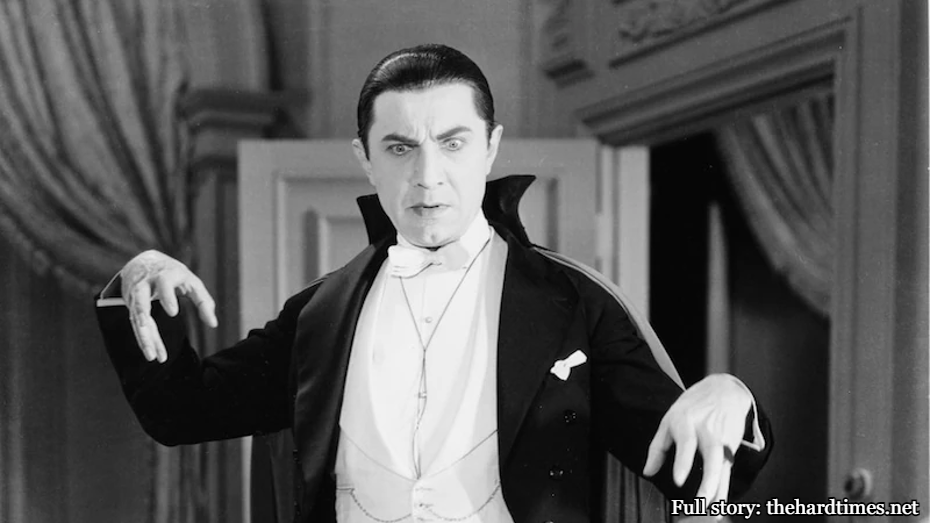 At the end of the day, though he may seem frightening, Dracula is just another mildly-attractive, middle-aged, bisexual goth man in a really toxic polycule, trying to hook up with younger women. There’s a million of him in Silver Lake alone. Dracula would definitely like to try therapy, but mainly so that he can try legal ketamine. Like… a lot of it.
At the end of the day, though he may seem frightening, Dracula is just another mildly-attractive, middle-aged, bisexual goth man in a really toxic polycule, trying to hook up with younger women. There’s a million of him in Silver Lake alone. Dracula would definitely like to try therapy, but mainly so that he can try legal ketamine. Like… a lot of it.
16. Dr. Anton Phibes “The Abominable Dr. Phibes” (1971)
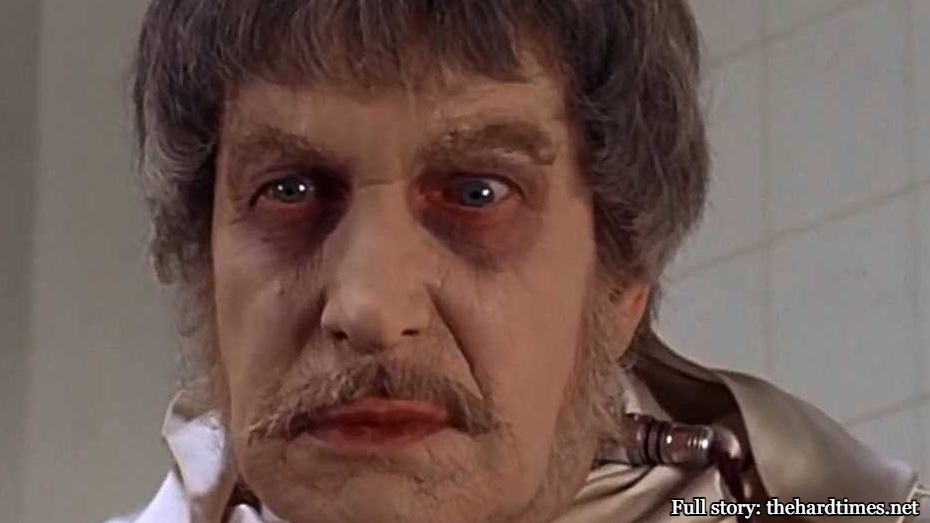 Some men need therapy. Some men need campy revenge. Dr. Phibes is definitely the latter. In the course of two movies, he orchestrates a plagues-of-Egypt inspired revenge scheme against the doctors who killed his wife, travels to Egypt to gain immortality and paddles away down the River of Life while singing “Somewhere Over the Rainbow.” Yep. That all happens. It really, really happens. Dr. Phibes could go to therapy for a little bit of grief support, but it’s dubious whether or not he even needs it.
Some men need therapy. Some men need campy revenge. Dr. Phibes is definitely the latter. In the course of two movies, he orchestrates a plagues-of-Egypt inspired revenge scheme against the doctors who killed his wife, travels to Egypt to gain immortality and paddles away down the River of Life while singing “Somewhere Over the Rainbow.” Yep. That all happens. It really, really happens. Dr. Phibes could go to therapy for a little bit of grief support, but it’s dubious whether or not he even needs it.
15. Emily “Let’s Scare Jessica to Death” (1971)
 The ultimate cottage-core vampire villain, Emily (aka Abigail Bishop) doesn’t think she needs therapy. She believes that the right organic diet and experimenting with psychedelics can cure any mental issue. She only goes after taking the wrong kind of mushroom and spending three hours hunched over a toilet, puking her guts out.
The ultimate cottage-core vampire villain, Emily (aka Abigail Bishop) doesn’t think she needs therapy. She believes that the right organic diet and experimenting with psychedelics can cure any mental issue. She only goes after taking the wrong kind of mushroom and spending three hours hunched over a toilet, puking her guts out.
14. Carrie White “Carrie” (1976)
 Carrie is ultimately more tragic than anything else. A sheltered, awkward young woman, pushed to the absolute end of her rope by her abusive mother and classmates. It’s genuinely possible Carrie would be willing to go to therapy, just as long as her Mom didn’t know and as long as the therapist didn’t say anything sinful.
Carrie is ultimately more tragic than anything else. A sheltered, awkward young woman, pushed to the absolute end of her rope by her abusive mother and classmates. It’s genuinely possible Carrie would be willing to go to therapy, just as long as her Mom didn’t know and as long as the therapist didn’t say anything sinful.
13. Larry Talbot “The Wolf Man” (1941)
 Yeah, yeah, men are dogs. We’ve heard. Larry is definitely the kind of “strong and steady,” John Wayne type who thinks that therapy is for women and “hysterical men.” But he changes his tune after crying watching the “Barbie” movie. He definitely bought the “I Am Kenough” sweatshirt.
Yeah, yeah, men are dogs. We’ve heard. Larry is definitely the kind of “strong and steady,” John Wayne type who thinks that therapy is for women and “hysterical men.” But he changes his tune after crying watching the “Barbie” movie. He definitely bought the “I Am Kenough” sweatshirt.
12. Mark Lewis “Peeping Tom” (1960)
 When people tell you they don’t like/trust therapists, usually they accompany it with all manner of silly, stupid and borderline upsetting reasons. Mark from “Peeping Tom” might have some pretty good ones, though, considering his abusive father spent his entire childhood performing psychological experiments on him and basically treating him like a lab rat. But Mark would likely be able to open up to a female therapist pretty well.
When people tell you they don’t like/trust therapists, usually they accompany it with all manner of silly, stupid and borderline upsetting reasons. Mark from “Peeping Tom” might have some pretty good ones, though, considering his abusive father spent his entire childhood performing psychological experiments on him and basically treating him like a lab rat. But Mark would likely be able to open up to a female therapist pretty well.
11. Irena Dubrovna “Cat People” (1942)
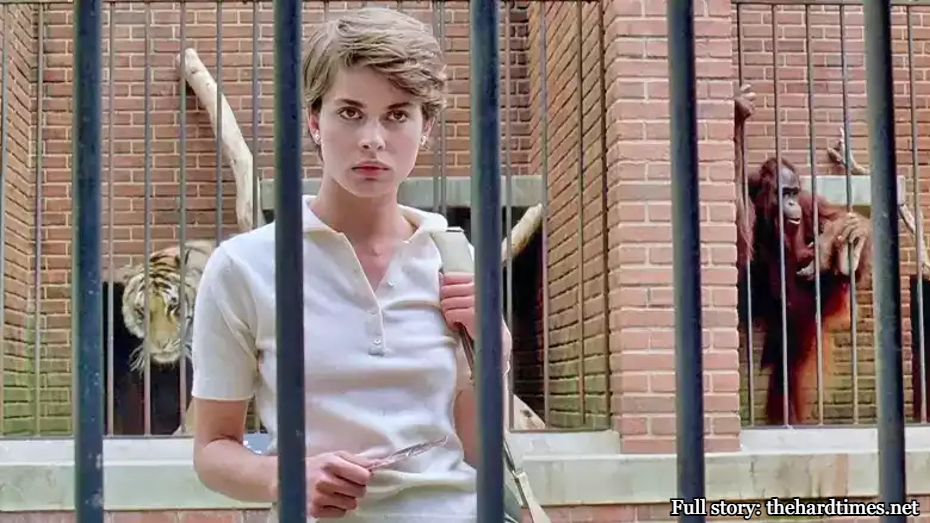 Speaking of sheltered, let’s not forget Irena from Jacques Tourneur’s “Cat People.” Irena isn’t really a villain, per se, but the victim of sinister, buttoned-up repression. She believes that if she engages in sexual activity, or becomes overly desirous, she will turn into a cat person. Ultimately, she will benefit from a highly empathetic therapist with a keen understanding of anthropology, folklore and human sexuality. As well as feline behavior.
Speaking of sheltered, let’s not forget Irena from Jacques Tourneur’s “Cat People.” Irena isn’t really a villain, per se, but the victim of sinister, buttoned-up repression. She believes that if she engages in sexual activity, or becomes overly desirous, she will turn into a cat person. Ultimately, she will benefit from a highly empathetic therapist with a keen understanding of anthropology, folklore and human sexuality. As well as feline behavior.
10. The Tethered “Us” (2019)
 What’s fascinating about the Tethered, (well, one of the fascinating things), is that any American therapist you’d care to name has one in the “Us” universe. It makes one so curious to wonder what therapy sessions look like down in those tunnels. Is it just a nice way for the Tethered to lie down for an hour or do the Tethered also need to work on their crippling fear of emotional intimacy. Perhaps not? But definitely attachment issues.
What’s fascinating about the Tethered, (well, one of the fascinating things), is that any American therapist you’d care to name has one in the “Us” universe. It makes one so curious to wonder what therapy sessions look like down in those tunnels. Is it just a nice way for the Tethered to lie down for an hour or do the Tethered also need to work on their crippling fear of emotional intimacy. Perhaps not? But definitely attachment issues.
9. Jason Voorhees “Friday the 13th: Part 2” (1981)
 Ah, Jason. The most accomplished of all the slashers. He has the highest body count, he’s died and been resurrected the most times, he’s even been an astronaut. But more than an astronaut, Jason Voorhees is Dutch-American. That has absolutely nothing to do with his character, it’s just a fun fact. But more than Dutch-American, Jason is a Mama’s boy. It’s clear he’s working through some stuff, watching his Mom take vengeance all those years, watching her decapitation. It weighs on someone’s psyche, no doubt. But he needs to learn healthier coping mechanisms than occasional homicide. Fortunately, of all the classic slashers, Jason seems the most receptive to therapy.
Ah, Jason. The most accomplished of all the slashers. He has the highest body count, he’s died and been resurrected the most times, he’s even been an astronaut. But more than an astronaut, Jason Voorhees is Dutch-American. That has absolutely nothing to do with his character, it’s just a fun fact. But more than Dutch-American, Jason is a Mama’s boy. It’s clear he’s working through some stuff, watching his Mom take vengeance all those years, watching her decapitation. It weighs on someone’s psyche, no doubt. But he needs to learn healthier coping mechanisms than occasional homicide. Fortunately, of all the classic slashers, Jason seems the most receptive to therapy.
8. The Creature “Frankenstein” (1931)
 We here at The Hard Times are very concerned by this nation’s dwindling literacy rates. To this we say: Read the book. The Creature, Frankenstein’s self-proclaimed Adam, is hardly a bad guy. He’s a moody kid who comes from a single, neglectful father, struggling with his place in the universe and a creator who actively hates him. He’s no more evil than half the kids in suburban garage bands. And just like those kids, he’ll eventually go to therapy once he reaches college.
We here at The Hard Times are very concerned by this nation’s dwindling literacy rates. To this we say: Read the book. The Creature, Frankenstein’s self-proclaimed Adam, is hardly a bad guy. He’s a moody kid who comes from a single, neglectful father, struggling with his place in the universe and a creator who actively hates him. He’s no more evil than half the kids in suburban garage bands. And just like those kids, he’ll eventually go to therapy once he reaches college.
7. The Armitage Family “Get Out” (2017)
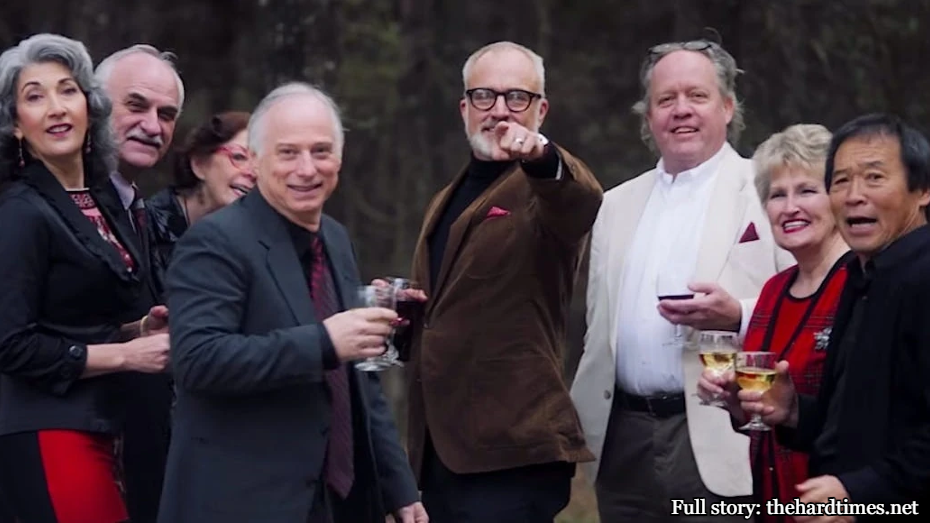 Oh God, these fuckers. So let’s be clear, Missy Armitage is a psychotherapist, quite an established one. Her husband is a brain surgeon. And we all know how psychologically well-adjusted the families of doctors and psychiatrists are. Right? No? Oh God. Yeah, this family should really go get help. And not from a colleague of the Mom.
Oh God, these fuckers. So let’s be clear, Missy Armitage is a psychotherapist, quite an established one. Her husband is a brain surgeon. And we all know how psychologically well-adjusted the families of doctors and psychiatrists are. Right? No? Oh God. Yeah, this family should really go get help. And not from a colleague of the Mom.
6. Gabriel “Malignant” (2021)
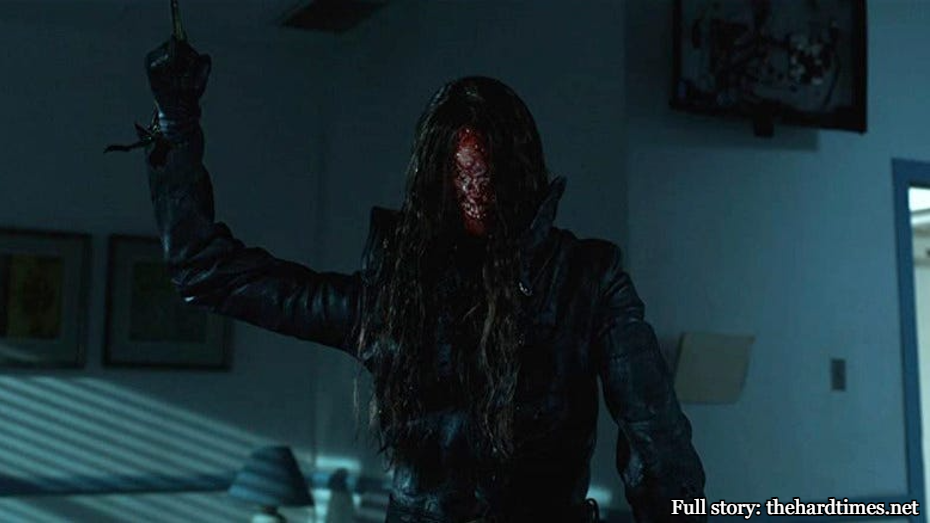 Admittedly, Gabriel has been kind of fucked over by the medical establishment for most of his life. It’s a tough world for weird little guys. Especially when said weird little guys are unformed conjoined twins that turned into tumors and have to share a brain with their other, fully developed sibling. I think Gabriel would get a lot out of therapy to cure him of attachment issues. It might help him a lot.
Admittedly, Gabriel has been kind of fucked over by the medical establishment for most of his life. It’s a tough world for weird little guys. Especially when said weird little guys are unformed conjoined twins that turned into tumors and have to share a brain with their other, fully developed sibling. I think Gabriel would get a lot out of therapy to cure him of attachment issues. It might help him a lot.
5. Kenny “Terror Train” (1980)
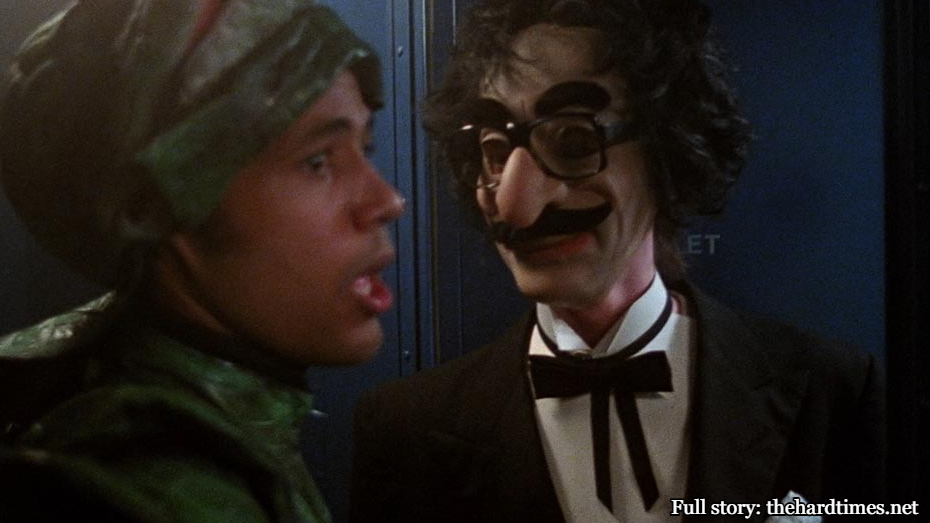 Another tragic villain, Kenny from “Terror Train” is the ultimate depiction of hazing gone spectacularly awry. In this film, Kenny is out for revenge after his frat brothers tricked him into engaging in… well… some light necrophilia as a prank. Honestly, fuck those dudes. But don’t fuck therapy.
Another tragic villain, Kenny from “Terror Train” is the ultimate depiction of hazing gone spectacularly awry. In this film, Kenny is out for revenge after his frat brothers tricked him into engaging in… well… some light necrophilia as a prank. Honestly, fuck those dudes. But don’t fuck therapy.
4. Alex Hammond “Prom Night” (1980)
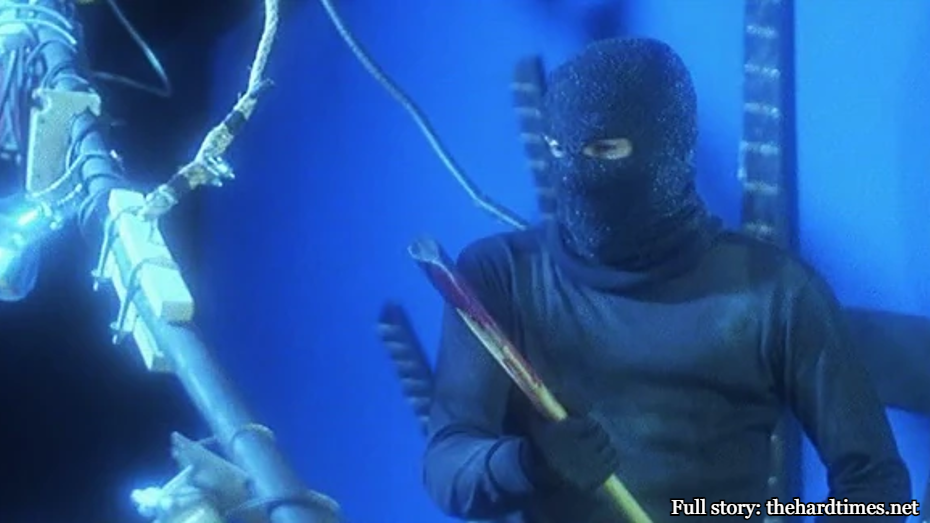 Now, granted, no one who writes for The Hard Times went to their high school prom. Unpopularity is a prerequisite to work here. But even we, with our limited knowledge, have to imagine that chopping up the teens who accidentally killed your sister in childhood is not a part of the classic prom experience. Alex is a really interesting villain, because he’s one of the few that actually masks. He spends his down-time sending threatening phone calls to the people on his shit-list, but is otherwise a normal kid and a protective big-brother. One apology probably could’ve prevented a lot.
Now, granted, no one who writes for The Hard Times went to their high school prom. Unpopularity is a prerequisite to work here. But even we, with our limited knowledge, have to imagine that chopping up the teens who accidentally killed your sister in childhood is not a part of the classic prom experience. Alex is a really interesting villain, because he’s one of the few that actually masks. He spends his down-time sending threatening phone calls to the people on his shit-list, but is otherwise a normal kid and a protective big-brother. One apology probably could’ve prevented a lot.
3. The Gill-Man “Creature From the Black Lagoon” (1954)
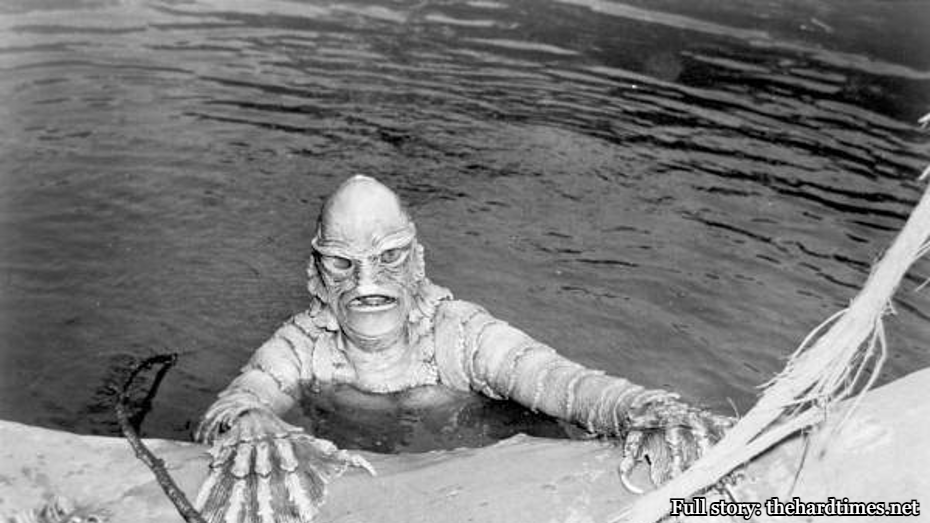 The most sympathetic of the classic Universal monsters by far, The Gill-Man is many things. First off, look at him, he’s adorable. He weirdly reminds me of a mixture of a frog and my cat, which means that he’s getting forehead kisses. But moreover, the Gill-Man is one of the few monsters we actually see trying to change. In “The Creature Walks Among Us” (1956), the Gill-Man undergoes surgery to try and adjust to life in the human world. And while tragically, it doesn’t work out the way it should’ve, the Gill-Man certainly understands that progress is non-linear and one bad day does not negate all the good ones.
The most sympathetic of the classic Universal monsters by far, The Gill-Man is many things. First off, look at him, he’s adorable. He weirdly reminds me of a mixture of a frog and my cat, which means that he’s getting forehead kisses. But moreover, the Gill-Man is one of the few monsters we actually see trying to change. In “The Creature Walks Among Us” (1956), the Gill-Man undergoes surgery to try and adjust to life in the human world. And while tragically, it doesn’t work out the way it should’ve, the Gill-Man certainly understands that progress is non-linear and one bad day does not negate all the good ones.
2. Pearl “X”/”Pearl” (Both 2022)
 Like Carrie, Pearl is more tragic than outright villainous most of the time. Really, she’s just a young woman, grappling with poverty, with loneliness, with the desire not to be close to people and with a mother who is often outright abusive. As an old woman, she grapples with the wasting of her life, the continued ambivalence of her husband and the tragedy of watching others live your dreams. She’s uniquely human. Uniquely well-intentioned. And so much harm could’ve been prevented if adequate mental health care had been available in rural Texas in 1918.
Like Carrie, Pearl is more tragic than outright villainous most of the time. Really, she’s just a young woman, grappling with poverty, with loneliness, with the desire not to be close to people and with a mother who is often outright abusive. As an old woman, she grapples with the wasting of her life, the continued ambivalence of her husband and the tragedy of watching others live your dreams. She’s uniquely human. Uniquely well-intentioned. And so much harm could’ve been prevented if adequate mental health care had been available in rural Texas in 1918.
1. Dr. Hannibal Lecter “The Silence of the Lambs” (1991)
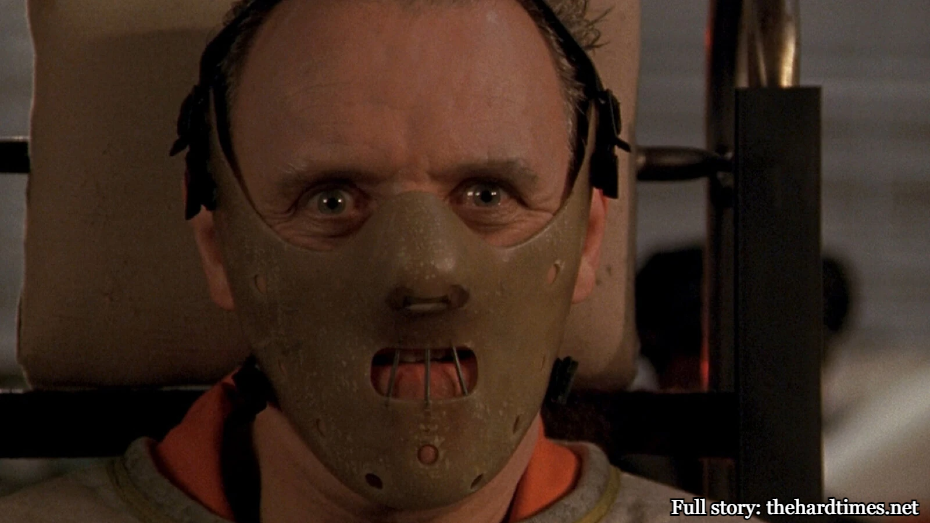 Hannibal Lecter proactively chose to go to therapy. He made therapy his thing. Now, he’s not just a patient, but a licensed psychiatrist. He’s the kind of guy who goes to therapy, likes it, and decides that the greatest joy he could possibly have is pushing the buttons in peoples’ heads around. So, to clarify, it’s him and Britta Perry from “Community.” Basically the same person.
Hannibal Lecter proactively chose to go to therapy. He made therapy his thing. Now, he’s not just a patient, but a licensed psychiatrist. He’s the kind of guy who goes to therapy, likes it, and decides that the greatest joy he could possibly have is pushing the buttons in peoples’ heads around. So, to clarify, it’s him and Britta Perry from “Community.” Basically the same person.
Honorable Mention: The Bear Suit Guy “The Shining” (1980)
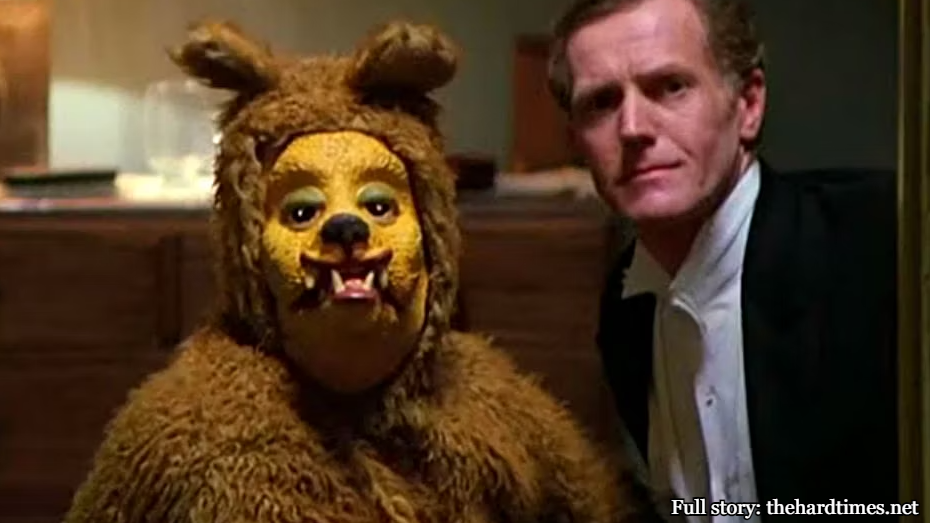 I don’t know what you want me to say. This might be the most well-adjusted man I’ve ever seen. He doesn’t need therapy. He’s found his bliss. And that bliss happens to involve being a furry. Good on him, I say.
I don’t know what you want me to say. This might be the most well-adjusted man I’ve ever seen. He doesn’t need therapy. He’s found his bliss. And that bliss happens to involve being a furry. Good on him, I say.

